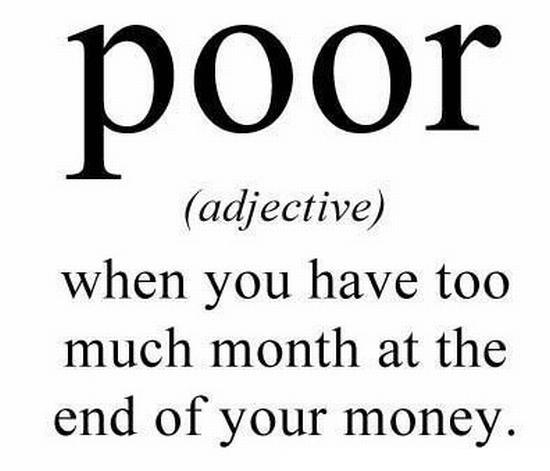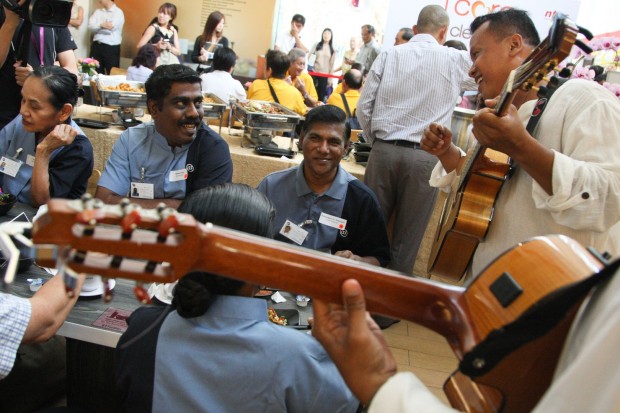My close friends are always lamenting about the ever rising standards of living, pay increment not keeping up with inflation (which by the way is extremely real) and not having enough money to spend. They are not alone; in fact ‘Money Not Enough’ is a nationwide phenomenon in Singapore. But if average white collar employees who earn between the ranges of S$1,800 to S$4,000 are already feeling the pressures from inflation, can you imagine how a low wage worker who earns less than $1,500 a month feels?
Thankfully, National Wage Council (NWC) aims to help these low-wage workers as income growth of this group has substantially lagged behind the rest of the nation’s workforce and required ‘special attention and assistance’. Often positioned at the lowest rung of society, these workers are unable to effectively fend for themselves when it comes to wage increment and other employment benefits. The recent influx of cheaper foreign workers may have further diluted their bargaining power.
NWC’s 2015 Wage Guidelines recommended a minimum monthly increment of S$60 for workers earning a basic salary of up to S$1,100 a month (among other recommendations). Although the union asked for more than $60, employers were willing to concede only a S$60 wage raise. According to a National Wages Council spokesperson, there are 127,000 Singaporean and Permanent Resident full time employees earning below the S$1,100 basic salary who would benefit if all their employers gave out the $60.
According to a Ministry of Manpower spokesperson, there are 150,000 Singaporean and Permanent Resident full time employees who earned below the S$1,000-line last year. Thankfully, National Wage Council (NWC) aims to help these low-wage workers as income growth of this group has substantially lagged behind the rest of the nation’s workforce and required ‘special attention and assistance’. Often positioned at the lowest rung of society, these workers are unable to effectively fend for themselves when it comes to wage increment and other employment benefits. The recent influx of cheaper foreign workers may have further diluted their bargaining power.
Based on an assumption that these workers are drawing S$1,100 at the moment, this works out to be a 5.5% increment from their basic salary which is considered pretty good given that workers with diplomas and above usually only enjoy 4% annually. However, in dollar amounts, over a month of 30 days, it only works out to be an additional $2 per day. They cannot even purchase a bowl of Wantun Noodles which costs around S$2.50 on average. Not forgetting that this is before CPF deduction.
In 2014, unions also called for a higher wage raise of more than S$50, but employers negotiated this downwards to just S$50. Sadly, even with this reduced wage raise recommendation of just $50, only 30% of non-unionised companies actually implemented this wage increment.
In contrast, 80% of the unionised companies acted on this call, indicating that unions have been effective in pushing for wage increases.
With this comparison, the take up rate for non-unionised companies is extremely disappointing. Unfortunately, NWC does not have enough clout to ensure that companies accept its recommendations. Some of these companies gave reasons such as cash flow problems or that they are barely surviving the economy. But in reality, are non-unionised firms performing worse than unionised firms?
The President of the Association of Small and Medium Enterprises, Mr Chan Chong Beng, found it hard to believe firms would have difficulty following the NWC guidelines. “If the companies cannot even manage an increase of their employees’ salary by $50, they are in trouble – there is a need for them to seriously review their business model,” he said.
To sweeten the deal this time round, our dear government is subsiding S$24 out of the recommended S$60 from the Wage Credit Scheme. Employers only need to fork out an additional S$36 a month per low wage worker. Our unions have proven themselves that they are actively encouraging their unionised companies to take on the recommendation.
However, it is tough to move the non-unionised companies, hence this is where Singapore National Employers Federation (SNEF) needs to do its part to create greater awareness and buy in from more of their members to raise wages. SNEF together with employers have to play their part to better the lives of Singaporeans and Permanent Residents who are in the lower income percentiles.
More Can Be Done
Setting the monthly salary cut off conservatively at S$1,100 makes it easier for employers to enact the pay raises for a smaller group of workers as a start, but NWC should review a higher cut off monthly salary for next year that encompasses at least 80% of lower skilled Singapore or Permanent Resident workers in Singapore.
I am particularly comforted by NTUC Labour MP Zainal Sapari’s pointed reminder to government and employers in his 2016 Speech on the President’s Address, that there are still workers in non-unionised companies and those working in outsourced industries who have not received the $60.
He strongly recommended that “the dollar quantum wage increments should be made mandatory for employees in the 20th and 30th percentile, in terms of basic salary” and asking the government to make the NWC guidelines mandatory in three low wage industries *cleaning, security and landscape” in order to ensure more low wage workers are helped.
Last but not least, I agree with Zainal Sapari that that it is advisable for companies to gain-share their productivity gains with the workers and invest in their workers’ skills so that Singapore will be able to retain our global competitiveness. Managers should actively create opportunities for workers to upgrade their skill sets and improve business processes wherever possible to enhance productivity, leading to lower wastage and ability to raise profit margins which can be shared to raise wages sustainably.
I hope my article will encourage employers to value every worker and share productivity gains fairly with them.









